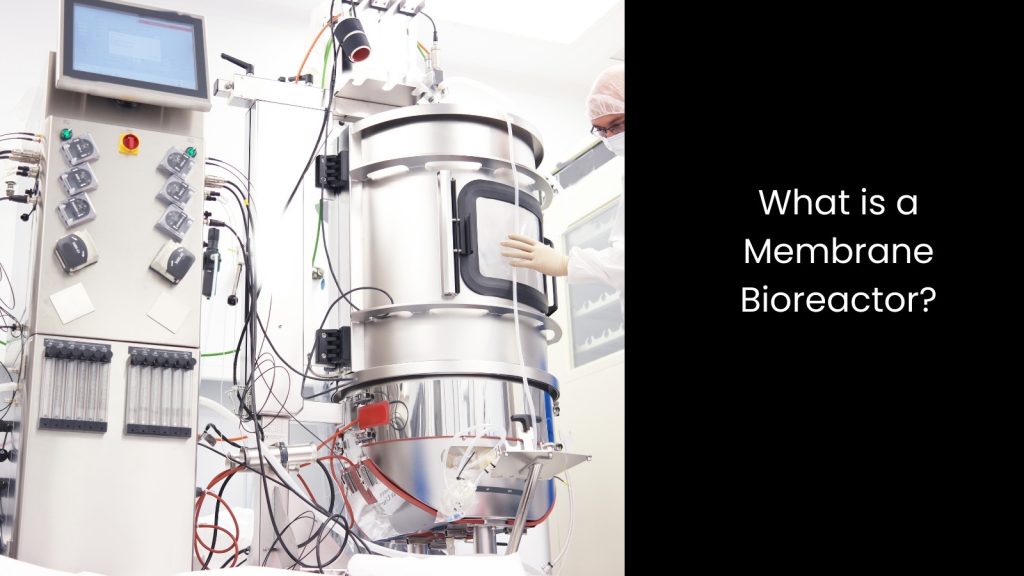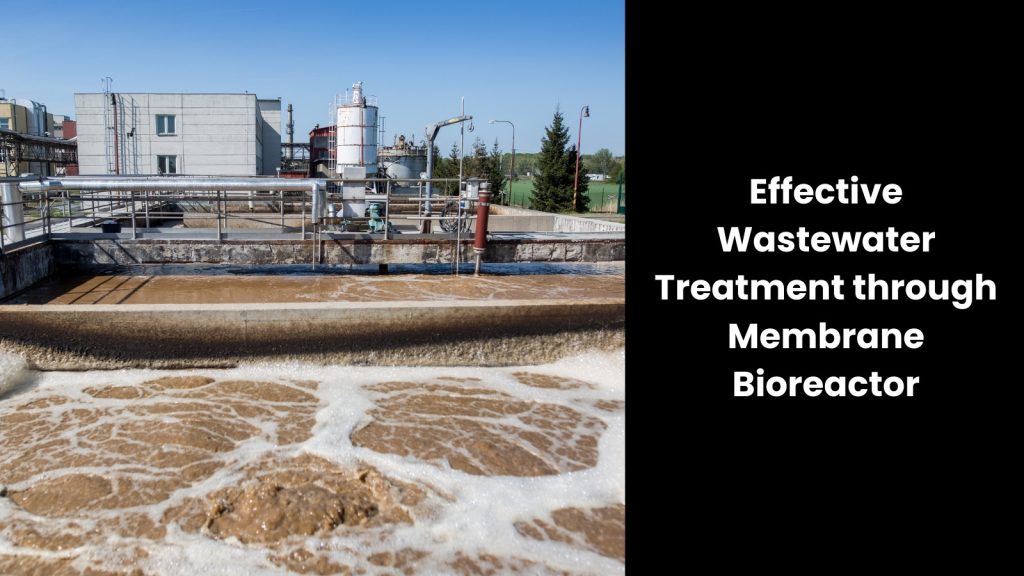Wastewater treatment is not something to be taken so lightly, especially in Australia, where this particular realm receives so much weight. Do you know why? That is because the Australian water supply’s large portion consists of treated wastewater. Inside a wastewater treatment plant, there are many machinery and processes that occur in general. Every wastewater plant tends to employ cutting-edge technology, tools, and processes in order to double their efficiency and effectiveness levels. This is where the ‘Membrane Bioreactor’ receives the limelight in the Australian wastewater treatment framework.
In this article, we concentrate on the utilisation of membrane bioreactors for wastewater treatment in Australia and their end-to-end benefits.
In this article, we concentrate on the utilisation of membrane bioreactors for wastewater treatment in Australia and their end-to-end benefits.
What is a Membrane Bioreactor?

- A Membrane Bioreactor is known as an MBR in short. If put in a simple way, this is kind of a modern system used to treat wastewater.
- The uniqueness of the latter is that it combines a traditional biological treatment method with membrane filtration. The biological part involves microorganisms breaking down organic matter in the wastewater. The membrane part uses filters to physically separate clean water from contaminants. That is how it mainly functions.
- Why are MBRs particularly important? The reason is that they are highly effective at removing pollutants and produce very clean water, suitable for reuse in various applications. What sets MBRs apart from other methods is their ability to produce high-quality effluent consistently, their compact size, and their efficiency in handling large volumes of wastewater.
- You know that traditional methods like activated sludge systems are less efficient and need more space. On the other hand, MBRs also reduce the need for settling tanks and can handle higher concentrations of biomass. This leads to better performance, for sure.
- This is why these are increasingly popular in both municipal and industrial settings in Australia.
Key Benefits of Membrane Bioreactor for Treatment of Wastewater

Compact Size
It is common knowledge that any wastewater treatment plant needs compact-sized equipment because space is usually limited. This is visible, especially in urban areas where land is expensive and scarce. If they opt for large, space-consuming equipment, it can be difficult to install and maintain, and it will require more land than is available.
Not to mention that larger equipment can lead to higher construction and operational costs. Space-requiring equipment can also be problematic in existing facilities that need upgrades but do not have room for expansion. This is where Membrane Bioreactors come in.
As you can see, these are much more compact than traditional wastewater treatment systems. They combine biological treatment with membrane filtration in a single unit. This way, they eliminate the need for large settling tanks and extensive infrastructure. Because of their compact size, MBRs can fit into smaller spaces. The latter makes them ideal for use in crowded urban areas or for space-limited plants.
You do not need to worry about the size of the MBRs. Despite their small size, MBRs are highly efficient and effective at treating wastewater. It efficiently produces very clean water suitable for reuse while saving a large number of costs for space utilisation.
Not to mention that larger equipment can lead to higher construction and operational costs. Space-requiring equipment can also be problematic in existing facilities that need upgrades but do not have room for expansion. This is where Membrane Bioreactors come in.
As you can see, these are much more compact than traditional wastewater treatment systems. They combine biological treatment with membrane filtration in a single unit. This way, they eliminate the need for large settling tanks and extensive infrastructure. Because of their compact size, MBRs can fit into smaller spaces. The latter makes them ideal for use in crowded urban areas or for space-limited plants.
You do not need to worry about the size of the MBRs. Despite their small size, MBRs are highly efficient and effective at treating wastewater. It efficiently produces very clean water suitable for reuse while saving a large number of costs for space utilisation.
Efficient Pollutant Removal
This is one realm that needs efficient pollutant removal methods. You know that untreated wastewater contains various contaminants, including pathogens, organic matter, and chemicals, which can harm the environment and public health if discharged untreated. This is why an efficient pollutant removal process is essential to ensuring that the treated water meets regulatory standards and is safe for reuse or discharge into natural water bodies.
There is no need to worry when the plants have Membrane Bioreactors in use. They excel in this aspect by combining biological treatment with membrane filtration. In the biological process, microorganisms break down organic pollutants, while membrane filtration physically separates contaminants from the water, as we stated before. This dual approach ensures thorough pollutant removal, resulting in exceptionally clean water.
It is evident that MBRs can effectively remove a wide range of pollutants, including suspended solids, bacteria, viruses, and nutrients, surpassing the performance of conventional treatment methods.
On the other hand, the membrane barrier acts as a selective barrier. Do you know what that means? It means this allows only clean water molecules to pass through while trapping and concentrating pollutants for removal.
There is no need to worry when the plants have Membrane Bioreactors in use. They excel in this aspect by combining biological treatment with membrane filtration. In the biological process, microorganisms break down organic pollutants, while membrane filtration physically separates contaminants from the water, as we stated before. This dual approach ensures thorough pollutant removal, resulting in exceptionally clean water.
It is evident that MBRs can effectively remove a wide range of pollutants, including suspended solids, bacteria, viruses, and nutrients, surpassing the performance of conventional treatment methods.
On the other hand, the membrane barrier acts as a selective barrier. Do you know what that means? It means this allows only clean water molecules to pass through while trapping and concentrating pollutants for removal.
High-Quality Effluent
We hope that you already understand the necessity of high-quality effluent in treating wastewater. Now let us explain how Membrane Bioreactors back up those initiatives.
Obviously, the treated water is released into natural water bodies or reused for various purposes, including irrigation and industrial processes. High-quality effluent ensures that the discharged water meets regulatory standards and does not harm the environment or public health.
Membrane Bioreactors have the ability to produce high-quality effluent due to their advanced filtration technology. They use membrane barriers to physically separate contaminants from the water, resulting in exceptionally clean effluent.
The best thing about these membranes is that they are capable of removing a wide range of pollutants, including suspended solids, bacteria, viruses, and dissolved organic matter, going beyond the limits of conventional treatment methods. Plus, MBRs provide consistent treatment performance as well.
They are capable of producing effluent with low turbidity and pathogens, which makes it suitable for direct discharge or reuse without further treatment.
Obviously, the treated water is released into natural water bodies or reused for various purposes, including irrigation and industrial processes. High-quality effluent ensures that the discharged water meets regulatory standards and does not harm the environment or public health.
Membrane Bioreactors have the ability to produce high-quality effluent due to their advanced filtration technology. They use membrane barriers to physically separate contaminants from the water, resulting in exceptionally clean effluent.
The best thing about these membranes is that they are capable of removing a wide range of pollutants, including suspended solids, bacteria, viruses, and dissolved organic matter, going beyond the limits of conventional treatment methods. Plus, MBRs provide consistent treatment performance as well.
They are capable of producing effluent with low turbidity and pathogens, which makes it suitable for direct discharge or reuse without further treatment.
Consistent Performance
When it comes to the wastewater treatment framework, this requires consistent performance. But why? Let us put it in a simple way. This is required to ensure reliable treatment of wastewater, regardless of variations in influent quality and flow rates.
This is where consistency is important to meet regulatory standards and maintain the efficiency of the treatment process. Did you know that MBRs are good at providing consistent performance? This is a simple process for them due to their advanced filtration technology and biological treatment processes.
It goes without saying that the membrane barriers in MBRs effectively remove contaminants, while the biological treatment ensures robust degradation of organic matter and pollutants. This is the exact point! This combination results in stable and reliable treatment performance, producing consistently high-quality effluent.
Another fact is that, unlike outdated treatment methods, MBRs are just perfect for managing a range of wastewater conditions as they are less sensitive to changes in influent properties.
This is where consistency is important to meet regulatory standards and maintain the efficiency of the treatment process. Did you know that MBRs are good at providing consistent performance? This is a simple process for them due to their advanced filtration technology and biological treatment processes.
It goes without saying that the membrane barriers in MBRs effectively remove contaminants, while the biological treatment ensures robust degradation of organic matter and pollutants. This is the exact point! This combination results in stable and reliable treatment performance, producing consistently high-quality effluent.
Another fact is that, unlike outdated treatment methods, MBRs are just perfect for managing a range of wastewater conditions as they are less sensitive to changes in influent properties.
Reduced Sludge Production
Sludge is one key fact that gives headaches to the wastewater authorities, yet they cannot get rid of it easily!
The real problem arises when they require reduced sludge production to minimise disposal costs, environmental impact, and the need for additional treatment processes. If there are excessive levels of sludge, it will be highly challenging to handle, dispose of, and treat them smoothly. Of course, the latter leads to increased operational expenses and environmental concerns.
Membrane Bioreactors are the ideal solution for reducing sludge production due to their efficient filtration process. Let us explain how this functions. As you can see, MBRs employ membrane barriers to physically separate solids from the treated water in the first place. This results in the production of concentrated sludge that is easier to handle and dispose of.
It is unnecessary to mention that this way, MBRs produce less excess sludge compared to traditional treatment methods, such as activated sludge systems.
Finally, it would be a win-win situation for both parties: the wastewater treatment plant authorities and the environment!
The real problem arises when they require reduced sludge production to minimise disposal costs, environmental impact, and the need for additional treatment processes. If there are excessive levels of sludge, it will be highly challenging to handle, dispose of, and treat them smoothly. Of course, the latter leads to increased operational expenses and environmental concerns.
Membrane Bioreactors are the ideal solution for reducing sludge production due to their efficient filtration process. Let us explain how this functions. As you can see, MBRs employ membrane barriers to physically separate solids from the treated water in the first place. This results in the production of concentrated sludge that is easier to handle and dispose of.
It is unnecessary to mention that this way, MBRs produce less excess sludge compared to traditional treatment methods, such as activated sludge systems.
Finally, it would be a win-win situation for both parties: the wastewater treatment plant authorities and the environment!
Effective Wastewater Treatment through Membrane Bioreactor

Since you have gone through this article from top to bottom, you understand how important it is to opt for suitable solutions when it comes to wastewater treatment, right? Membrane Bioreactor fulfils all your expectations with its top-notch features and functionalities while helping you keep the sustainability promise alive. However, if you have a robust wastewater asset solution in hand, you do not need to worry about integrating these types of new technology into them. If you hold hands with an industry expert, they will surely offer their technical support at any time.







